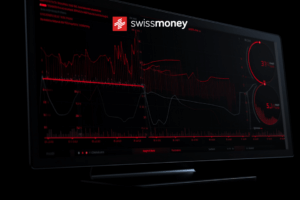If you have ever received a notice from your bank stating that you have insufficient funds to cover a transaction, you know how frustrating and costly it can be.
We will explore the meaning of insufficient funds, who gets charged for insufficient funds, and how to prevent it. Learn how to keep our bank accounts healthy and avoid the frustration of insufficient funds.
What does it mean when you have insufficient funds?
Insufficient funds are used to describe a situation where an account holder does not have enough money in their bank account to cover a particular transaction or payment demand.
When this occurs, the bank refuses to complete the transaction or payment request, and the account holder is charged an insufficient funds charge also known as a non-sufficient funds (NSF) fee.
This fee is typically in the range of $25 to $50 and is meant to cover the cost incurred by the financial institution due to the failed transaction.
It’s important to note that insufficient funds fees can add up quickly if the account holder has multiple transactions that are declined due to inadequate funds.
In addition, if the account holder has overdraft protection, the bank may still cover the transaction but charge an overdraft fee, which can be just as costly.
What do you do if you have insufficient funds?
If you have insufficient funds, you should take immediate action to avoid costly fees and potential financial penalties. Here are some steps you can take:
Check your account balance

You can do this by logging into your bank account online or by checking your bank statement. Make sure to subtract any pending transactions or outstanding checks from your account balance to get an accurate picture of your available funds.
Add more money to your account
If you have a savings account, you can transfer funds from there to your checking account to cover the transaction. Alternatively, you can deposit cash or a check into your account to increase your available funds.
Use overdraft protection
If you have overdraft protection on your account, the bank may cover the transaction even if you have insufficient funds. However, you will still be charged an overdraft fee, so make sure to check the terms and conditions of your account before using this option.
Link a backup account
You can link a backup account, such as a savings or credit card account, to your checking account. If insufficient funds occur, the bank can automatically transfer funds from the backup account to cover the transaction.
Contact your bank
If you’re unable to add more funds to your account or use overdraft protection, contact your bank to discuss your options. They may be able to offer a temporary solution, such as a payment plan or a waiver of the insufficient funds fee.
Remember, it’s important to take action as soon as possible if you have insufficient funds to avoid additional fees and penalties.
Who gets charged for insufficient funds?
The account holder is the one who gets charged for insufficient funds. When a transaction is attempted, and there are not enough available funds in the checking account to cover it, the bank will decline the transaction and charge an insufficient funds fee to the account holder.
This fee, also known as a non-sufficient funds (NSF) fee, is typically in the range of $25 to $50 and is deducted from the account holder’s balance.
How to prevent insufficient funds
Here are a few tips to prevent insufficient funds
Keep track of your account balance and available funds
Keeping track of your account balance and available funds is essential to avoid insufficient funds. It’s important to regularly monitor your account balance and track any pending transactions to get an accurate picture of your available funds.
When you make a purchase, the merchant may not immediately deduct the money from your account, and this can make it difficult to know your true account balance.
By monitoring your account balance and deducting any pending transactions, you can get a more accurate picture of your available funds and avoid spending more money than you have.
To do this, you can check your account balance regularly through online banking, mobile banking, or by calling your bank’s customer service. You can also track your transactions and any pending transactions to make sure that you have enough money to cover them.
📚Related: Transaction Pending but Money Deducted From Your Account
Set up low-balance alerts or notifications
Setting up low-balance alerts or notifications is a useful way to prevent insufficient funds in your bank account. Many banks offer this service, which sends you a message or notification when your account balance falls below a certain threshold.
This is often customizable, so you can choose the balance amount that triggers the alert. By receiving this notification, you can take action to add funds to your account or avoid making transactions that could lead to insufficient funds fees.
This service is particularly helpful for those who may struggle to keep track of their account balance or for those who have a lot of automatic payments set up.
By receiving an alert when your account balance is low, you can take control of your finances and avoid the risk of over drafting your account or incurring non-sufficient funds (NSF) fees.
Establish a budget and stick to it
Establishing a budget is an important step toward preventing insufficient funds in your bank account. A budget is a financial plan that lists your income and expenses, and it can help you manage your finances by giving you a clear understanding of where your money is going.
To create a budget, start by listing all of your sources of income and then make a list of all your expenses, including bills, groceries, transportation, entertainment, and other miscellaneous expenses.
Then, divide your expenses into categories and determine how much money you can allocate to each category based on your income. It’s important to be realistic and only allocate money that you have available.
Once you have established your budget, it’s important to stick to it by monitoring your expenses and ensuring that you are not overspending in any category.
This may require making some adjustments and cutting back on unnecessary expenses, but it can help you avoid the risk of overspending and incurring insufficient funds fees.
Avoid using debit cards for large transactions
Using debit cards for large transactions may not be the best choice because most debit cards have daily spending limits, which can be a problem if you need to make a large purchase.
If you exceed your daily spending limit, your transaction may be declined, which can be embarrassing and inconvenient.
To avoid this situation, it’s recommended to consider using a credit card or another payment method instead of a debit card. Credit cards have higher spending limits than debit cards, and you can also earn rewards, cashback, or points for using them. Still, you are not protected from card decline either.
However, it’s crucial to use credit cards responsibly and avoid accumulating debt that you can’t afford to pay back. Always keep track of your spending and pay your credit card bills on time and in full to avoid interest charges and late fees.
Summary of insufficient funds

Managing your bank account is a critical part of maintaining your financial health, and avoiding insufficient funds is an essential aspect of this.
By keeping track of your account balance, setting up alerts, establishing a budget, and avoiding large transactions on debit cards, you can reduce the risk of insufficient funds fees and penalties.
Remember to communicate with your financial institution if you need help managing your account or if you experience any issues with fees.
By following these tips, you can avoid the frustration and financial burden of insufficient funds and maintain a healthy financial future.

